Reimagining Visitor Economy Success for your Destination
Published on February 24, 2023
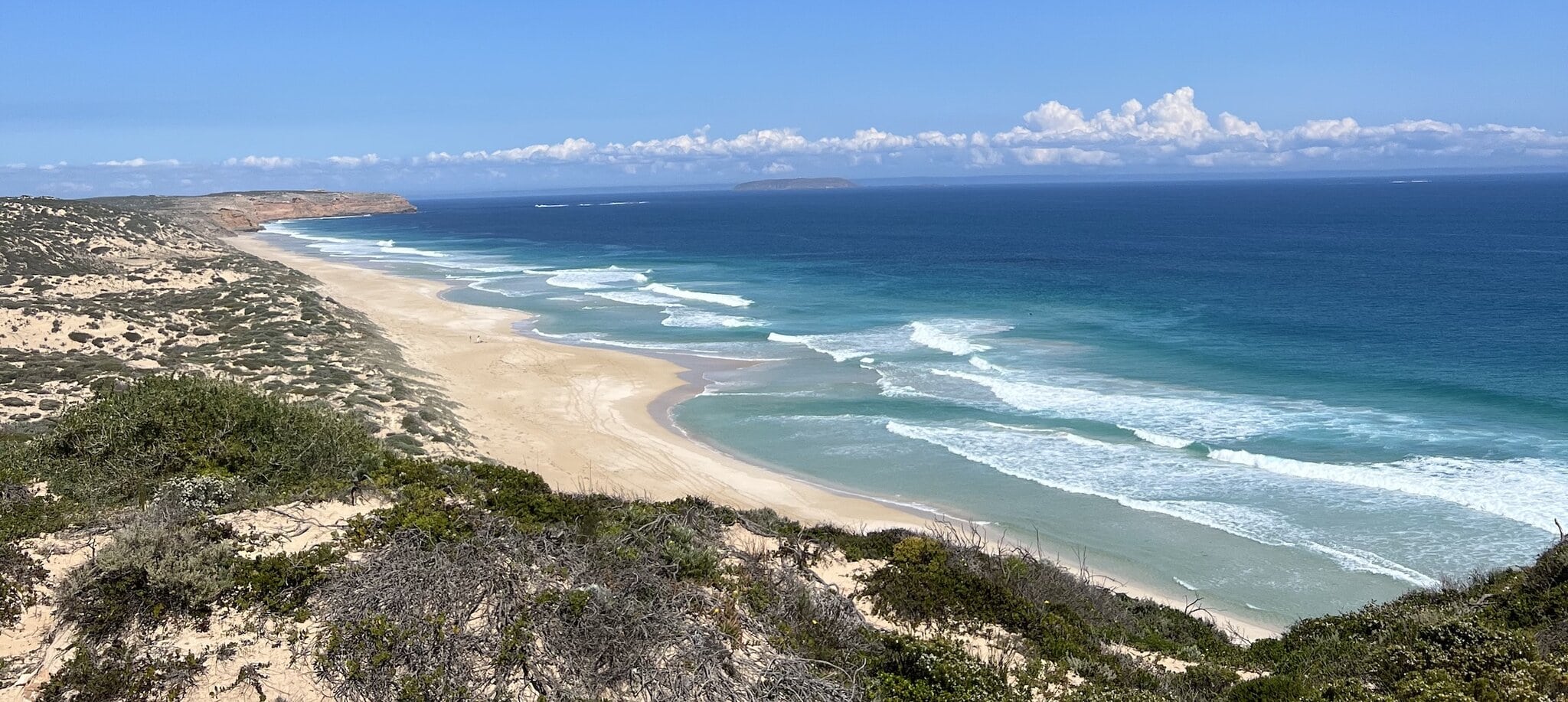
The pandemic was truly a double edge sword for our regional tourism destinations. On one hand, lockdowns impacted businesses and livelihoods immeasurably, particularly in States and Territories that had long-term lockdowns.
And on the other side, when lockdowns ceased, but borders were still closed, our nature-based experiences and other environmental assets received unparalleled visitation which led to irreparable damage to some of our tiny, precious, special places.
It was a lose / lose situation, no matter which way you looked at it.
What this has taught us though, is that we are living in a hugely volatile world.
Disruption is here to stay; where nothing is guaranteed, and what is status quo today, could well be flipped on its head tomorrow.
It’s also taught us that our destination’s ecosystem are complex and fragile; and one part of the ecosystem cannot be prioritised over other parts without having serious consequences.
Since the pandemic, it’s been our priority to unpack these learnings and understand what this means for destinations, and through our strategic planning work, support our industry to look at the ecosystem as a whole, rather than in silos.
Shifting the Goal Posts
We know that visitors infiltrate destinations across many and varied touchpoints, having the ability to impact many if not all facets of local communities - including social, economic, cultural and environmental touchpoints.
This means that each part of the community feels, to a degree, the impact of visitors.
So, the first question we ask our clients when we begin our journey with them, is, what does visitor economy success look like for your locals?
We know that visitors can support the economic viability of a destination – these metrics are readily available, and we’re conditioned to think of visitor economy success in this way - but do we truly understand the impact of visitors on the environment? The impact on social and community harmony? Or how they change the locals way of life that they love?
Success for the visitor economy needs to measure key metrics that provide insight into impact of visitation across four pillars; with equal weighting across each pillar (where positive impact across all results in success).
- Community – Net positive impact on the local community (understanding community sentiment, involvement and support of the visitor economy)
- Environment – Net positive impact (regenerative, not just sustainable impact) on the local environment (responsible visitation, business management operations, local initiatives)
- Economy – Sustainable operations of businesses, sustainable job creation, population growth.
- Visitor – Visitors connect with the place and people, are responsible, and become advocates of the destination.
It was incredibly pleasing to hear at the Australian Regional Tourism Conference 2022, that Austrade have established an Industry Data and Expert Analysis Working Group work through some recommendations on long-term progress indicators for the Australian Visitor Economy. The Longitudinal Indicators for the Visitor Economy Framework (LIVE Framework) will look at developing an innovative, diverse and resilient set of indicators comprised of leading and lagging measures encompassing social, environmental, and economic indicators, which will be able to provide a holistic perspective of visitor economy performance. Hurrah!
This work is will be game changing for Australian RTOs/RTBs as it will support them to redefine what success looks like, and have the data to build the business case for continued investment!
Embracing a Stewardship Mindset for Visitor Economy Governance
One way to effectively pivot to this new model of ‘visitor economy success’ is to implement a Stewardship governance model.
The World Travel and Tourism Council define Destination stewardship as an approach to destination governance that seeks to balance and meet the economic, environmental, and social/cultural needs of a destination; whilst operating within a legitimate governance model with active participation from the public and private sectors, as well as the local community.
It requires a shared understanding of the common good, and effective platforms for collaboration with shared objectives and measurements of success that go beyond traditional growth metrics.
Important conversations are happening globally around the need for Destination Marketing Organisations to focus as much on social, cultural and environmental stewardship as much as economic indicators to uncover true visitor economy success to ensure there will indeed be beautiful and authentic destinations to market and visit into the future.
Activating Destination Stewardship
Understanding what matters most and what success looks like for host communities ultimately determines where and how the visitor economy can help to achieve collaborative goals.
The pandemic activated an increase in awareness and sense of responsibility within local communities, particularly across matters that impact their liveability within their destination, and those pertaining to their special local places. Harnessing this sense of responsibility through developing deep and meaningful relationships with all community stakeholders, and empowering a collective vision is an imperative to ensure visitor economy activations are community-led, which will inevitably lead to greater, shared success for communities.
So, to activate stewardship, stakeholders must agree on an understanding of who the region’s high-value visitors are, and having a consistent commitment to addressing challenges across the region that threaten the balance between community, environment and economy - which includes communicating responsible visitor behaviour, mitigating poor visitor behaviour, and addressing the negative impacts to the region’s environment or community harmony.
A mutual understanding of these challenges and a collaborative commitment to implementing strategic initiatives to implement opportunities will be key to activating this approach.
Destination Stewardship vs Destination Management
We understand that many of the RTOs or RTBs across Australia operate under a governance framework that supports a Destination Management and/or Destination Marketing outcomes.
What’s challenging with both of these frameworks is that, for the most part, RTO’s are one of many custodians for the region's story and natural and built assets.
So, with limited control over the experiences delivered on the ground or the stories generated by the locals, the role of RTOs should effectively be that of leadership, education, inspiration and collaboration – all intangible, but critically important aspects of achieving the desired collaborative vision for the future.
Activating a stewardship mindset is different to the traditional ‘management’ mindset, with the overall intention not to manage, but to act in the best interests of all facets of the destination, with the ultimate responsibility of advocating for the destination to remain as authentic and untouched as possible, for both locals and visitors to enjoy for generations to come.
Destinations Leading the Way with Stewardship
Although COVID-19 was utterly devastating for our sector, the unexpected pause was welcomed by many global destinations, giving them time to think and proactively plan for how they wanted to manage the relationship between the visitor and their destination without the imminent stress of continuous growth, visitor volumes, and mostly limited budgets.
Following are case studies of three globally recognised destinations who are leading the way by implementing destination stewardship governance models, which is seeing the sector contribute to the greater good of the community and environment, as well as supporting their local tourism operators.
Whilst each destination has different challenges to one another, each destination provides insights into how they are addressing a variety of challenges of which we can take inspiration and ideas from.
Eyre Peninsula
Throughout the second half of 2022, we worked with the Eyre Peninsula region in South Australia on their 2025 Destination Marketing Plan.
After deep listening with community and stakeholders we created an evidence based marketing plan that features:
- A co-created vision for the future of tourism for the region
- A regenerative mindset, to set the strategic tone for decision making
- A regenerative measurement strategy where success for the region would only be realised if the visitor economy impacted positively on the environment, visitor, industry and community.
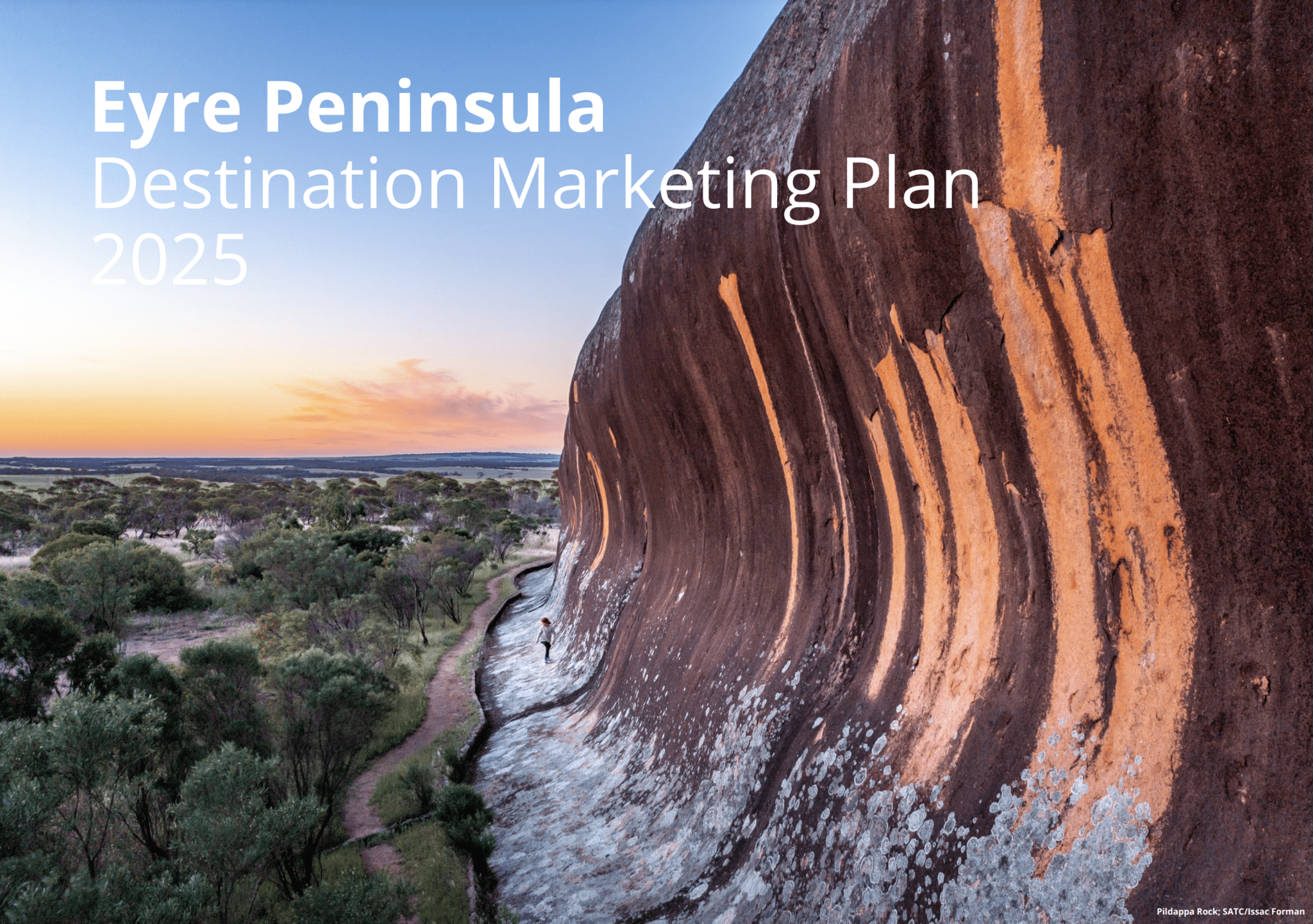
Australian Capital Territory
In December 2022, VisitCanberra launched the T2030 ACT Tourism Strategy 2023-2030.
To inform the Plan, VisitCanberra initiated several layers of community and industry consultation, engagement and co-creation of solutions.
We were thrilled to work in partnership with VisitCanberra on this project across two listening projects and a strategic planning session, which resulted in helping shape the following outcomes in the Plan:
- The development of a collaborative vision and values set
- The elevation of the quadruple bottom line as measure of success (community, environment, visitor and economy), making it Australia’s first State and Territory Visitor Economy strategy to focus equal weighting on the four tenets when it comes to measuring the success of the Visitor Economy.
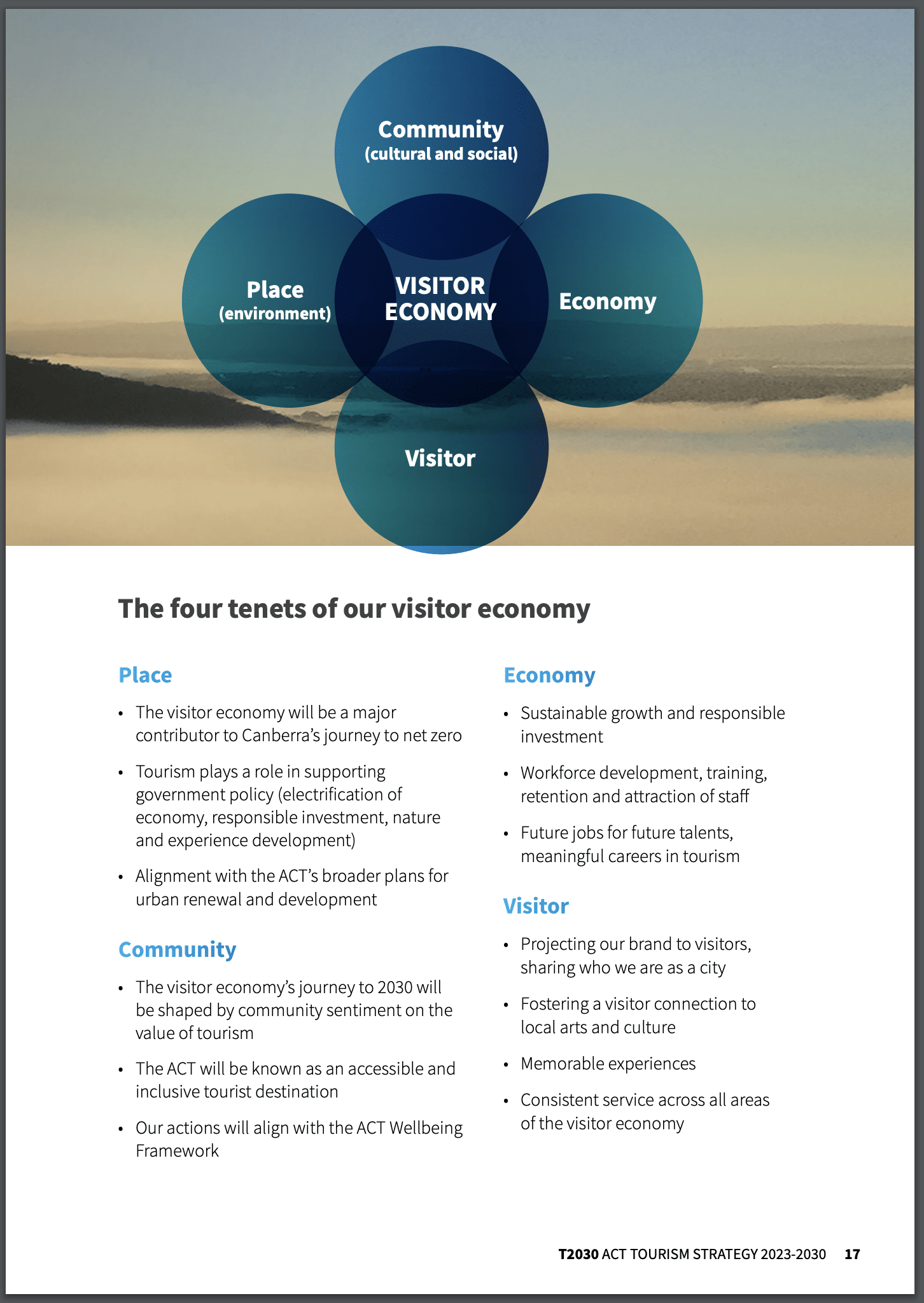
Sonoma Tourism
Sonoma County Tourism (SCT) is the organisation responsible for destination marketing and management for the renowned wine region in California, USA.
As part of its FY19-21 strategic plan, SCT moved from being a destination marketing organisation (DMO) to a destination stewardship organisation (DSO) with the goal of ensuring all programming is in the best interest of Sonoma County. The core programming around marketing remained paramount, but the activities and associated messaging will centre on promoting the area for travellers who seek an experience that aligns with the values around stewardship and responsible travel.
- Read the Strategic Plan here >
- Read the CEO’s e-newsletter introducing the industry to the change >
- In early 2021, SCT and Sonoma County Regional Parks entered a partnership with the national Leave No Trace organisation to develop a county-wide responsible recreation initiative to help mitigate environmental impacts in area parks, preserves, and other outdoor recreation locations
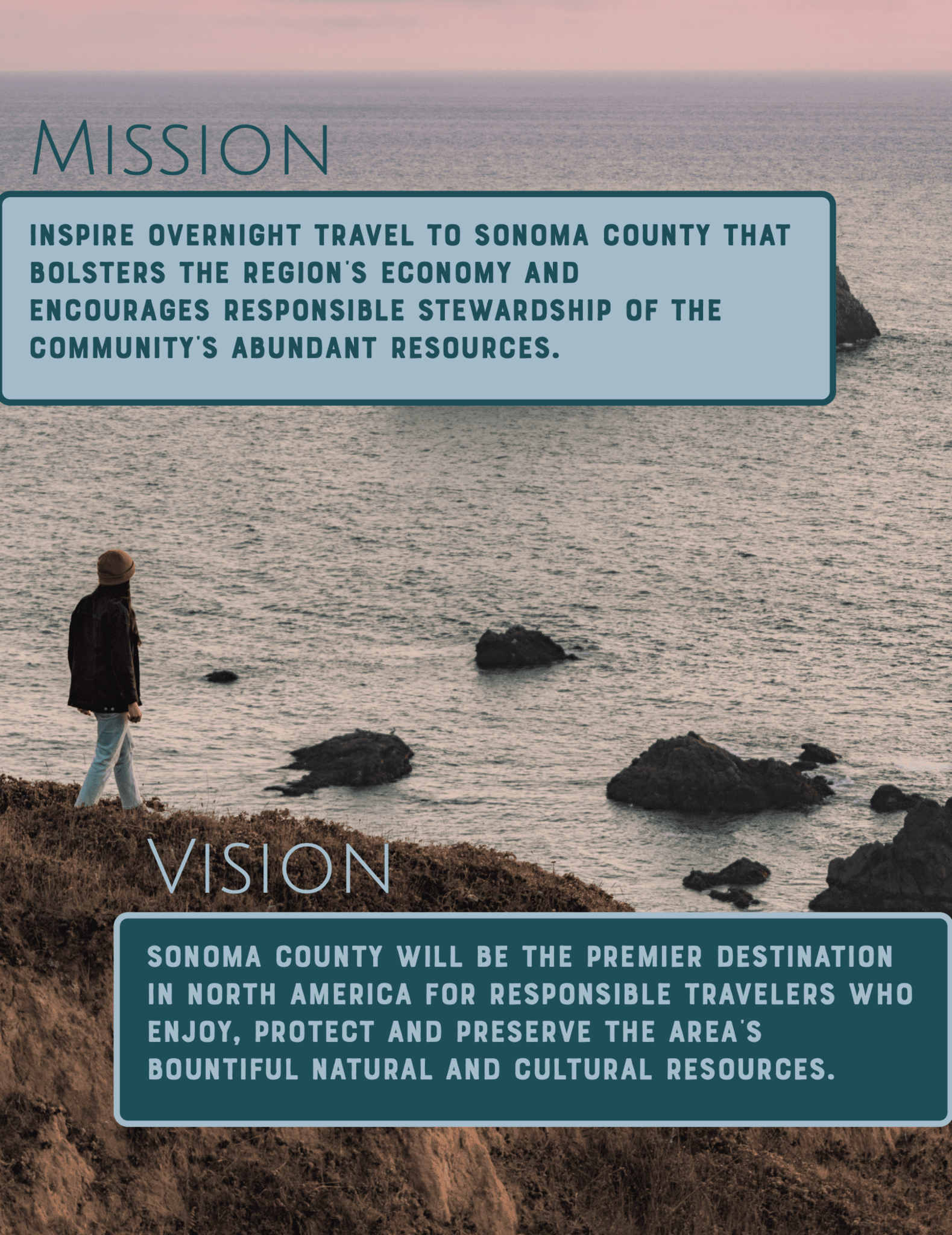
Bay of Plenty
Bay of Plenty is a destination in New Zealand’s North Island, who have a strong focus on ensuring the visitor economy is delivering net positive benefit back to local community and environment. They have also embraced the culture and world view of their First Nation’s custodians as part of their strategic planning and vision for the future. They are also looking at world leading ways of funding their tourism sector through resident and local business levies.
Their award winning “The Love of Tourism” Destination Management Plan has many examples of best practice destination stewardship activation that YPT can use as inspiration.
- A wholistic and integrated approach to Destination Management across all stakeholders, with central focus around Community, Environment and Brand.
- Identified metrics of what successful community engagement looks like for the destination
- Risk and crisis management focus
- Clear benchmarking, monitoring and evaluation of the Plan’s success.
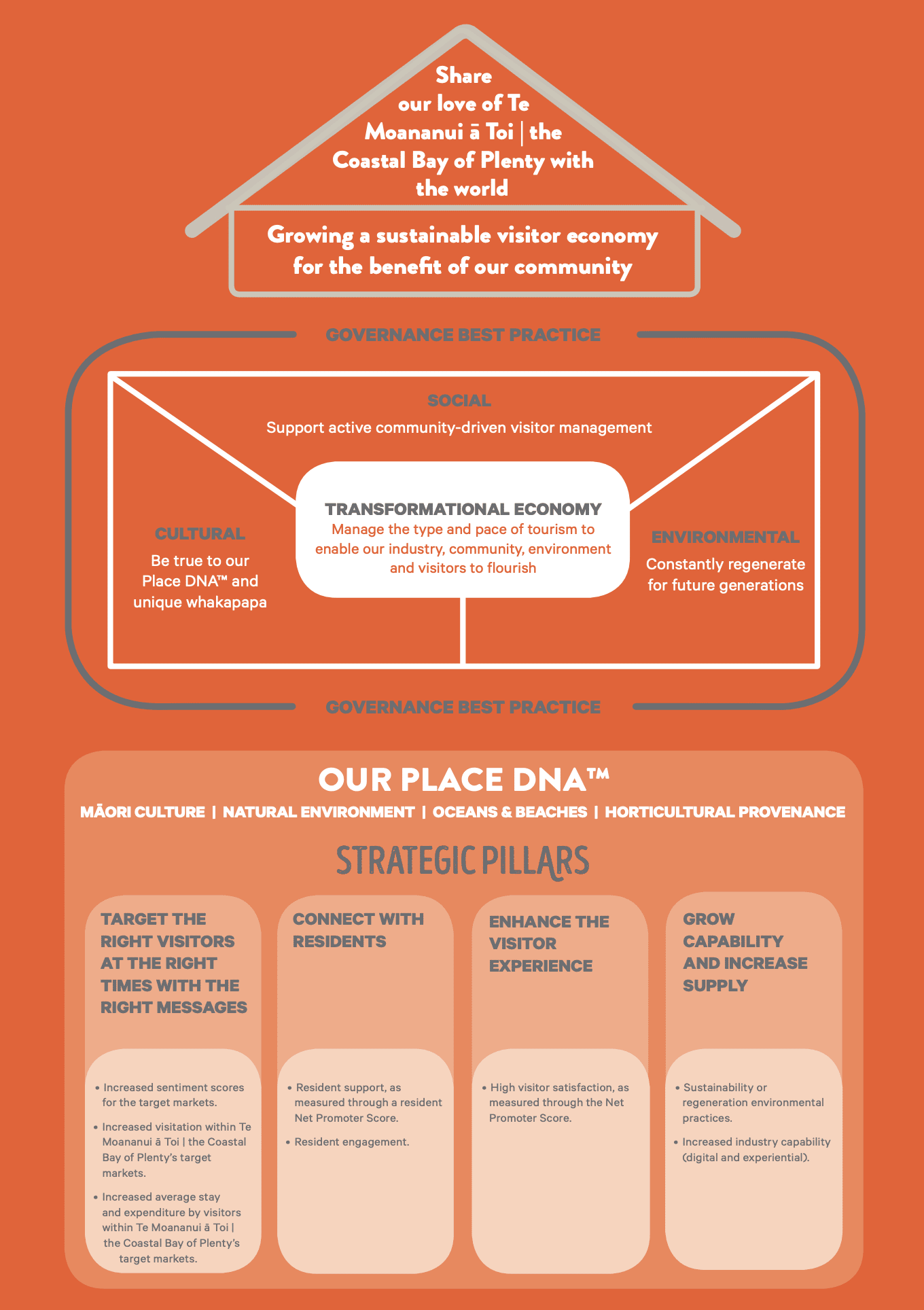
A final note ...
Custodians of destinations across Australia and globally are at a critical point in time regarding visitor economy planning.
Acknowledging the complex nature of destination visitor economies, our question for our industry is:
What does visitor economy success look like for your local community?
It's our mission to help our destination strategy clients answer this question, and to ensure these complex ecosystems are supported in balance for locals and visitors to enjoy for many more generations to come.
